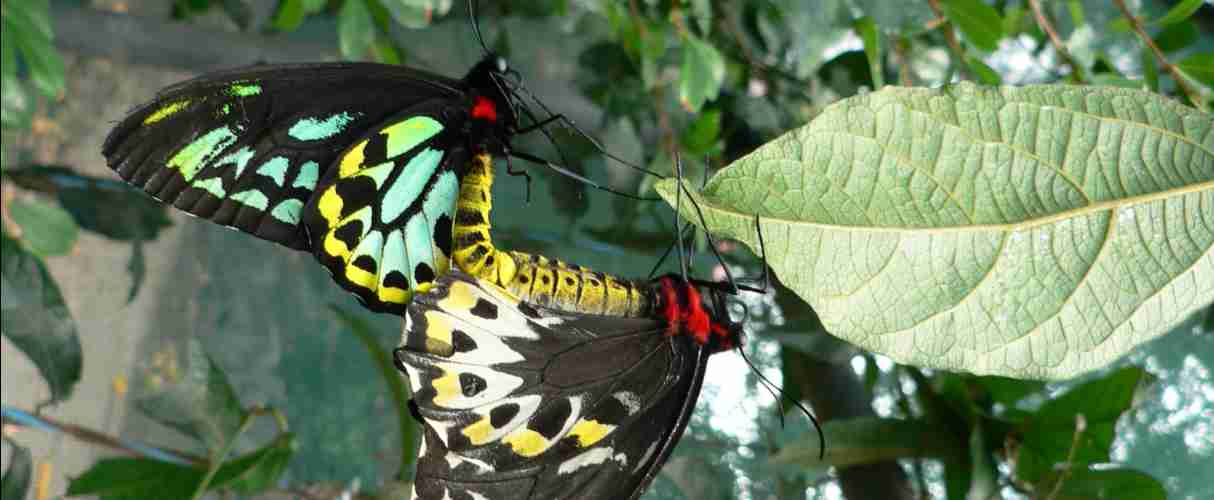The richmond birdwing butterfly is one of Australia’s largest butterflies and also one of the most in need of protection. Listed as vulnerable under the Nature Conservation Act, it is a critical priority species. Only Few population pockets remain in southeast Queensland and northern New South Wales.
The larger female has a wingspan up to 16cm. She is mostly black and brown with yellow, cream and white patterns on her hindwings.
The smaller male grows up to 13cm wingspan and boasts spectacular iridescent green upper-hindwings. His forewing is black with a bright green top edge. The lower hindwing is vivid green, blue and yellow.
Both the male and female have yellow and black abdomens and a brilliant red patch on their mid-bodies.
While adult richmond birdwing butterflies feed on eucalyptus and maleleuca flowers, their larvae only survive if they eat a very specific plant, the aptly named richmond birdwing vine (Parastolochia praevenosa). The vine is listed as threatened in Queensland.
The female only lays one-to-three eggs per food plant. They are yellow, 2mm in diameter and are laid on the underside of the vine leaves. A single larvae has an enormous appetite and one 10yr old vine will be enough for only one hungry caterpillar. If there are too many competing larvae for the food-source, they can become cannibalistic.
The richmond birdwing butterfly was once an abundant species but extensive rainforest clearing and fragmenting their habitat has lead to it’s now fragile population.
Another threat is the invasive vine species, Dutchman’s pipe (Aristolochia elegans). This vine attracts the adult females and may lay her eggs on it’s leaves instead of the birdwing vine. Tragically, the dutchman’s pipe is toxic and will kill the larvae if they feed on it.
At Mary Cairncross we are committed to supporting the recovery of this incredible butterfly species. Visit out butterfly walk and you may see the hungry larvae eating from our richmond birdwing vine arbour!
